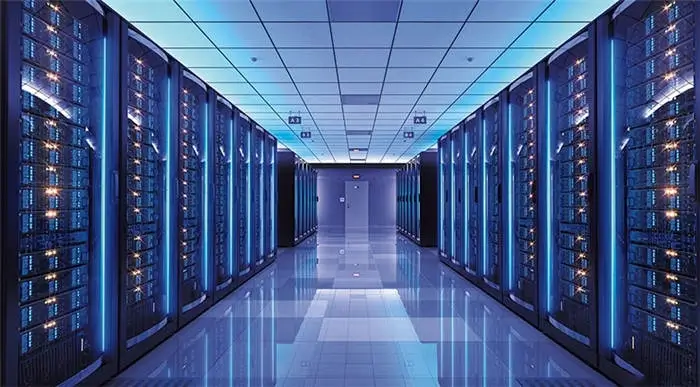Появление генеративного ИИ и резкий рост спроса на вычислительные мощности
Стремительный рост генеративного ИИ, а также такие сферы применения, как автономное вождение и умное производство, вызывают глубокие изменения в оценке вычислительных мощностей. В эпоху цифровой экономики бизнес сталкивается с серьёзным сдвигом — от подхода «массовых вычислений» к «революции эффективности». Массовый подход сильно зависит от расширения аппаратных ресурсов, что часто приводит к высоким затратам, низкой загрузке и неспособности удовлетворить требования рынка. Напротив, революция эффективности фокусируется на максимизации эффективности вычислений — оптимизации архитектуры, технологических инновациях и точном соответствии конкретным нагрузкам, переходя от «ориентации на масштаб» к «созданию ценности на основе эффективности». Эта трансформация определит успех цифровизации предприятий и изменит производительность в цифровой экономике.
Стремительный рост генеративного ИИ
Генеративный ИИ развивается с беспрецедентной скоростью. Однако этот взрывной рост спроса резко контрастирует с традиционной вычислительной инфраструктурой. Многие компании ориентируются на технические характеристики оборудования — считают количество серверов, а не фактическое использование, что приводит к серьёзной нехватке ресурсов. По данным IDC, средний уровень использования вычислительных мощностей в мировых дата-центрах составляет менее 30%. Это «выбросы вычислительных ресурсов» тормозят цифровую трансформацию и ставят компании в конкурентное невыгодное положение.
Неэффективность управления вычислениями
Устаревшие вычислительные системы также не обладают возможностями динамического планирования. Например, компании могут задействовать сотни GPU для обучения моделей, но узкие места в памяти и задержки передачи данных снижают фактическую вычислительную эффективность до менее чем 40% от теоретической мощности. Высокие затраты на строительство, оборудование и обслуживание дата-центров, а также быстрое устаревание технологий создают серьёзную нагрузку для малого и среднего бизнеса, исключая их из цифрового прогресса.
Потери энергии в традиционных дата-центрах
В условиях стремления правительств к углеродной нейтральности внимание всё больше сосредотачивается на энергоэффективности. Традиционные дата-центры с воздушным охлаждением обычно имеют показатель эффективности использования электроэнергии (PUE) выше 1,5 — а иногда достигает 1,88 — что означает, что на каждый блок вычислительной мощности приходится более 50% дополнительного энергопотребления на поддерживающие системы. Это существенно противоречит целям устойчивого развития.
Революция эффективности: переосмысление ценности вычислений
Революция эффективности переопределяет ценность через эффективность вычислений — максимизацию полезных вычислений на единицу энергии. Для достижения этого требуется системная инновация во всех компонентах: аппаратном обеспечении, программном обеспечении и приложениях. Речь идёт не просто о максимальной мощности оборудования — главное улучшить показатель производительности на ватт.
-
Жидкостное охлаждение:Полные системы жидкостного охлаждения могут снизить показатель PUE ниже 1,15 — сокращая энергопотребление более чем на 40% по сравнению с системами с воздушным охлаждением — при этом значительно увеличивая плотность размещения оборудования в стойках.
-
Чипы с смешанной точностью: Переключение между режимами точности FP16 и INT8 позволяет добиться до 30% прироста эффективности при минимальной потере точности при обучении больших моделей.
-
Гетерогенные вычисления: Связка центральных процессоров (CPU), графических процессоров (GPU), программируемых логических интегральных схем (FPGA) и специализированных ИИ-ASIC позволяет распределять задачи по назначению — для рабочих нагрузок вывода (inference) эффективность может быть в 8–10 раз выше, чем у универсальных CPU.
Интеллектуальное планирование и оркестрация вычислений
Настоящая эффективность требует интеллектуального программного обеспечения, которое динамически распределяет ресурсы:
-
Платформы следующего поколения автоматически масштабируют ресурсы в зависимости от текущих требований моделей.
-
Тонкое распределение ресурсов (ядер CPU, памяти, хранилища) заменяет принцип «всё или ничего» при выделении ресурсов.
-
Прогнозируемая отказоустойчивость повышает надёжность — в проверенном кейсе с автономным вождением уровень использования вычислительных мощностей вырос с 28% до 65%, а время переключения на резерв сократилось до менее чем 10 секунд.
-
Открытые фреймворки и плагины теперь позволяют повысить эффективность вычислений без необходимости в индивидуальной разработке.
От вычислений к бизнес-результатам
Цель — объединить вычисления с реальными приложениями.
-
Оптимизация вывода (Inference): Платформа для коротких видео оптимизировала свой рекомендательный движок, увеличив ежедневный объём обработки токенов с 218 млрд до 350 млрд — без дополнительного оборудования — и обеспечила рост пользователей на 200%.
-
Эффективность обучения: Команда медицинского ИИ сократила время обучения мультимодальных моделей обработки изображений с 15 до 4 дней, снизив затраты на вычисления на 40%.
-
Отраслевые достижения: В производстве повышение эффективности вычислений на этапах проектирования, моделирования и производства может сократить циклы НИОКР более чем на 30%.
В генеративном ИИ обучение с использованием смешанной точности и сжатие градиентов снизили затраты на обучение на 60%, а дистилляция и квантизация моделей уменьшили требования к выводу на 80%, что позволило обслуживать миллионы одновременных пользователей.
Переход от продажи оборудования к услугам вычислений
Эта революция требует изменения бизнес-модели: поставщикам необходимо перейти от продажи оборудования к предоставлению услуг по повышению эффективности вычислений. Это включает в себя:
-
Оборудование и программные инструменты
-
Платформы оптимизации и оркестрации
-
Полная поддержка жизненного цикла — мониторинг, диагностика, настройка
Некоторые компании сосредотачиваются исключительно на предоставлении услуг по повышению эффективности вычислений, обеспечивая ценность через модели диагностики, проектирования и постоянной оптимизации — часто повышая эффективность клиентов на 40% и обеспечивая повторяемый доход от сервисов.
Крупный облачный провайдер оценивает, что при общем увеличении эффективности вычислений на 50% мировое энергопотребление дата-центров сможет оставаться на уровне 2025 года — даже при росте вычислительных мощностей в 5–8 раз к 2030 году.
Заключение
Мы находимся на переломном этапе: переход от накопления вычислительных ресурсов методом «грубой силы» к вычислениям, ориентированным на эффективность. Метрики эффективности должны стать основным показателем цифровой производительности. Стандарт IDC PEEIE — оценивающий Продукт, Эффективность, Инженерные решения, Адаптацию в отрасли и Поддержку экосистемы — отражает эту новую парадигму. Одна финансовая компания, применяющая эту модель, сообщила о снижении инвестиций в вычисления на 30% и увеличении бизнес-результативности на 50%.
Рекомендации
-
Сделать приоритетом инновации в области чипов — инвестировать в НИОКР и поддерживать новые материалы и технологии производства.
-
Содействовать интеграции оборудования в домах, на производстве и в общественных службах.
-
Поддерживать экосистемы программного обеспечения и инструменты для разработчиков посредством создания общественной инфраструктуры и партнёрств.
-
Расширять внедрение интеллектуальных сервисоводновременно повышая качество обслуживания и уровень пользовательского опыта.
-
Содействовать международному сотрудничествув области исследований и разработок, совместимости и стандартов.
-
Укреплять этические и правовые рамки для обеспечения безопасного и устойчивого внедрения — с учётом вопросов конфиденциальности, предвзятости и замещения рабочих мест.
Революция эффективности вычислений перестала быть опцией — теперь это необходимость для конкурентоспособности в эпоху ИИ. Согласовывая инвестиции в вычислительные мощности с бизнес-целями, организации смогут устойчиво стимулировать инновации и повышать производительность. Те, кто примет этот переход, возглавят технологический авангард и сформируют будущее цифровой экономики.




